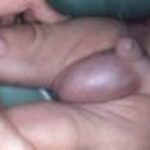Epididymitis affects millions of men each year. With a variety of causes, epididymitis is commonly caused by a bacterial infection. For many men, the stigma of genitalia pain often results in delayed medical attention. Understanding the causes, symptoms and treatments of epididymitis will ensure the appropriate treatment is obtained properly, thereby preventing chronic testicular damage.
Symptoms of epididymitis most often occur as a result of a bacterial infection such as gonorrhea or chlamydia. With symptoms exhibiting as painful, swollen and tender testicles and scrotum, epididymitis is caused by an inflammation of this tube which lies within the testicles and is noted to be as long as 20 inches. Responsible for storing and maturing sperm, the epididymitis infection, for some men may not be attributed to a sexually transmitted disease and, instead, may be the result of a urinary tract infection or prostate infection which was not treated promptly. When left untreated, symptoms may worsen to include painful bloodly discharge and fever. Symptoms can be acute or chronic often requiring extensive treatment.
Diagnosing epididymitis is completed through a variety of testing including sexual transmitted disease (STD) testing, in which swabbing of the penile opening. Because testicular torsion is a possible culprit, a nuclear scan of the testicles may be performed in extensive cases which can lead to a confirmation of blood flow discrepancies within the testicles. And, finally, an ultrasound of the testicles may be done to rule out other causes of pain and swelling.
When untreated epididymitis can impair fertility and even lead to abscess. Prolonged non-treatment of epididymitis, in acute cases, may attribute to develop of chronic recurring infections. Treatment of epididymitis commonly consists of a full course of anti-biotics with symptoms generally dissipating within two to three days. Utilizing an athletic support, applying cold packs and elevating the scrotum are also recommended as added home treatment options.
As with most acquired diseases, prevention is key. To prevent epididymitis, practicing safe sex and using condoms is highly recommended and treating urinary tract infections, as soon as symptoms present, is vitally important. When suffering from testicular pain, swelling or penile discharge and bleeding, consult your family practitioner or urologist regarding the possibility of an epididymitis diagnosis.




